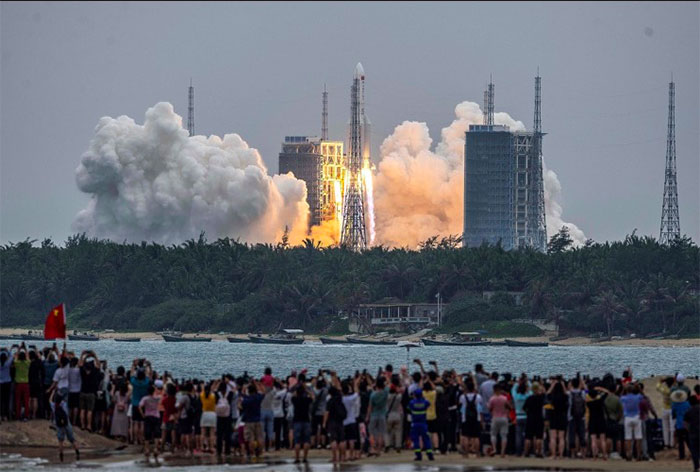China is developing a powerful nuclear reactor to support its missions to explore the Moon and Mars, researchers involved in the project have stated.
The reactor could generate 1 megawatt of electricity, which is 100 times more powerful than similar equipment that the U.S. National Aeronautics and Space Administration (NASA) plans to send to the Moon by 2030.
The project was initiated with funding from the central government in 2019. Although technical details and the launch date have not been disclosed, the technical design of a prototype reactor has recently been completed, and some key components have been manufactured, two scientists involved in the project confirmed to SCMP.
For China, this is an ambitious project with unprecedented challenges. The only nuclear device the country has ever sent into space was a small radioactive battery on the Chang’e 2, the first robotic explorer to land on the far side of the Moon in 2019. That battery could only generate a few watts to help the rover operate overnight on the Moon.

China needs nuclear reactor technology to realize its ambitious plans in space. (Photo: Xinhua).
According to Chinese researchers, chemical fuels and solar panels will no longer be sufficient to meet human space exploration needs as nations race to explore the Moon and Mars.
“Nuclear power is the most hopeful solution. Other countries have already launched some ambitious plans,” said an anonymous researcher from the Chinese Academy of Sciences.
In the final days of his presidency, former U.S. President Donald Trump signed an executive order to accelerate the application of nuclear energy in space programs for both military and civilian purposes. NASA recently invited bids from private companies to develop a 10-kilowatt nuclear fission device that could support a sustainable human presence on the Moon within a decade.
Russia has also announced plans to launch a massive spacecraft powered by TEM – a nuclear reactor with megawatt capacity, before 2030. Nuclear energy will enable the spacecraft to operate for over a decade in low Earth orbit and conduct other missions on the Moon or beyond.
The European Space Agency has initiated a similar project called Democritos, with a 200kW space reactor expected to be tested on the ground in 2023.
The first nuclear power device in orbit was SNAP-10A, launched by the U.S. in 1965. This device generated 500 watts of electricity for over a month before ceasing operations permanently.
A major challenge for China’s space reactor is cooling technology, according to a paper by the project team led by Jiang Jieqiong, a professor at the Institute of Nuclear Safety Technology of the Chinese Academy of Sciences in Hefei. The paper was published in the Chinese Journal of Basic Science in June this year.
Only a portion of the heat generated by the reactor will be used to produce electricity; the rest must be dissipated quickly in space to avoid melting. To address this issue, the reactor will utilize a foldable structure similar to an umbrella to increase the surface area of the waste heat radiators, Jiang and colleagues noted.
Due to its compact size, the space reactor will operate at much higher temperatures than those on Earth (potentially 2,000 degrees Celsius at the core). It will use liquid lithium for cooling to achieve higher electricity generation efficiency.
However, lithium will solidify when the temperature drops below 180 degrees Celsius. This is a challenge that the Chinese research team must overcome.
On Earth, a nuclear power plant needs to be inspected and maintained every few years. Some components need to be replaced due to wear in the radioactive environment. The materials and hardware in the space reactor must meet much higher standards to withstand the demands of long-duration space missions.
The Chinese government and military have funded various programs for developing nuclear reactors in space using different technical approaches, according to a study by space scientist Zhang Ze from the Shanghai Space Propulsion Institute published in the journal Rocket Propulsion last month.
Instead of building a large reactor, some research teams are developing smaller power devices. These tiny modules are easier to manufacture and can be arranged to form a larger machine with a power output of several megawatts, sufficient to power propulsion engines to send astronauts to Mars.
Officials in China’s aerospace industry have yet to decide on the best approach. The final solution may involve a combination of several different technologies.


















































